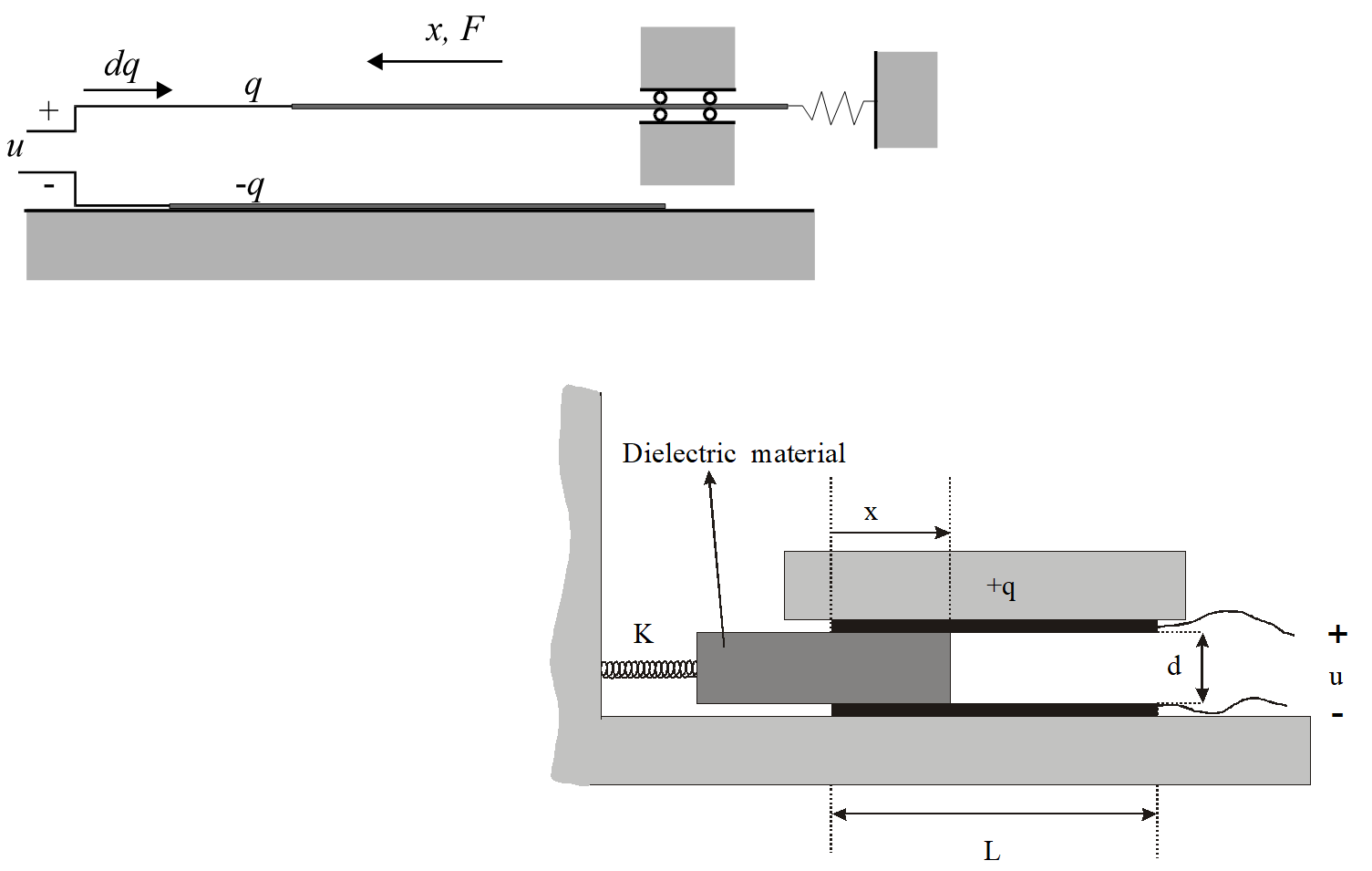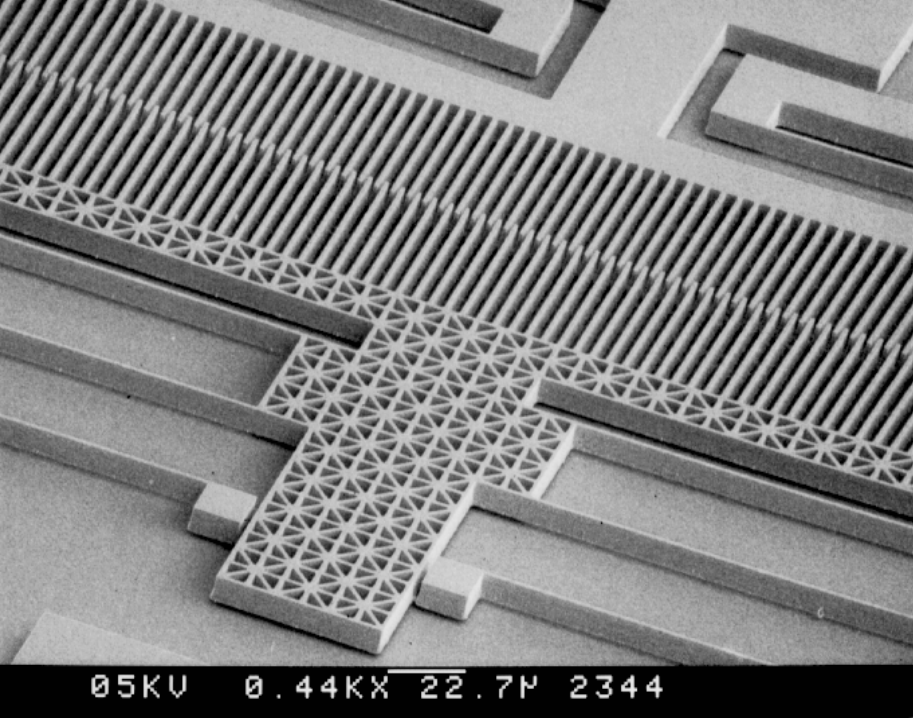So far we have focused on a parallel plate capacitor where one of the plates is suspended by a spring so that the distance between the plates can change. The same way of analysis applies also to other capacitor configurations. Figure 2.8.1 shows two examples, one where the overlap area of the electrodes changes and one where a dielectric can slide in and out of the capacitor.

Figure 2.8.1: Two other capacitive transducer configurations.
Compared to our earlier analysis, an important difference is of course how the capacitance depends on the position x. For the situation where the overlap area changes we have:
|
(2.38) |
where b is the width of the plates, l0 is the initial overlap, and d is the distance between the plates.
For the dielectric sliding in between the plates we have:
|
(2.39) |
where L is the total length of the electrodes as indicated in the figure and εr is the relative permittivity of the dielectric.
Now that we know the capacitance as a function of x we can find the energy function U(x,q) by performing a path integrals as we did before. Next, we can find the voltage u and the external force Fext by partial differentiation to q and x.
A common practical implementation of a transducer where the overlap changes is the so-called comb drive. Figure 2.8.2 shows a photograph of such a structure. It consists of a fixed comb (the upper one in the photograph) and a moveable comb (the lower one). When a voltage is applied between the combs they will slide into each other due to the electrostatic force. A nice property of a comb drive is that in the case of voltage control the force is proportional to the voltage squared but independent of x. As a result the equilibrium position can be easily calculated and there is no risk of pull-in. Try to derive this yourself! You may also try the first part of assignment 3A.

Figure 2.8.2: An electrostatic comb drive.